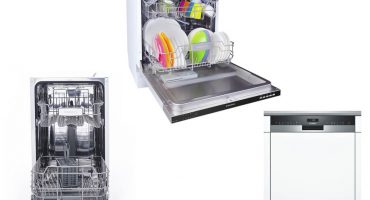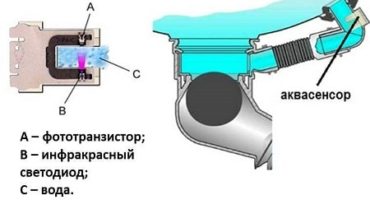Today, an increasing number of housewives are acquiring dishwashers, and this is understandable. After all, such a device saves time, copes with any dirt on the dishes and is relatively inexpensive.
But in order for the dishwasher to not only occupy a place in the kitchen, but to benefit and serve without breakdown for more than one year, before the start of its operation, the quality of the water entering the house should be determined, and can I connect to hot water, and also set the corresponding value on the device itself.
What is it for? How to determine the hardness of water? And what if it is not suitable for dishwashers?
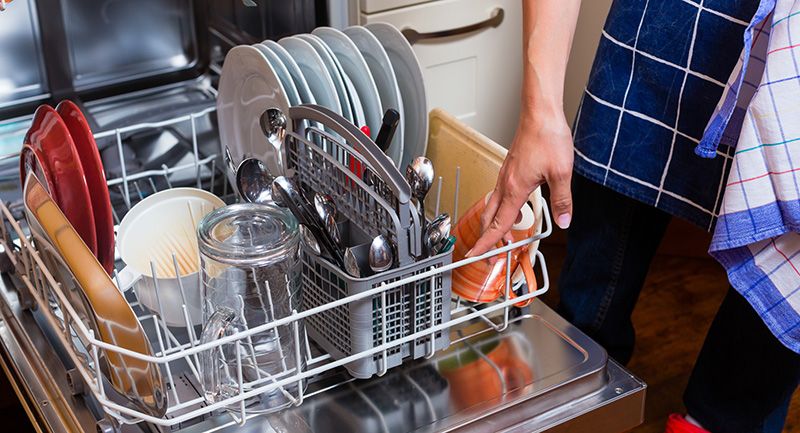
Why is hard water dangerous for dishwashers and more?
First you need to understand what is the danger of hard water. Surely every person at least once in his life came across such an unpleasant thing as scum.
Limescale or scale deposits are salts of Mg (magnesium) and Ca (calcium), which did not dissolve during the heating of water.
They usually gather around heating elements in kettles, in washing machines and on the walls and bottom of dishes that are used for boiling.
However, to think that scale simply increases the time of heating the water and spoils the aesthetic appearance of a household appliance is not true. Because the white precipitate in the dishwasher First of all, it shortens the life of an electric object, which entails considerable expenses.
Types of Hard Water
In this case, hard water is divided into:
- temporary or carbonate;
- permanent or non-carbonate.
How to find out the hardness of water, acceptable for a dishwasher? This can be done in various experimental ways.
But before that, you should find out which water indicators are, in principle, considered critical for household appliances and harmful to humans (Table 1).
| Water hardness value, °dH | Explanation |
| 0-4 | Very soft H2O |
| 5-8 | Soft H2O |
| 9-12 | H2O medium hard |
| 13-18 | Pretty tough H2O |
| 19-30 | Hard H2O |
| over 30 | Extremely tough H2O |
Table 1
We determine the hardness of water
There are several ways to answer the question: "How hard is the water flowing through the pipes?"
Heating.
To determine what kind of water gets into the house from a tap, you can use heating.
Important: the more scale forms during boiling, the more various compounds (phosphates, nitrites, sulfates, etc.) are contained in water.
"Folk" methods (do not give 100% accurate result):
- mass study;
For this method, it is necessary to prepare two identical vessels having equal volumes, and a kitchen scale.
After that, the vessels are filled with liquid from various sources, and both containers are weighed. The smaller the final weight (minus the weight of the empty dishes), the softer the water.
- soaping;
This is the easiest way, because for it you only need hands dipped in warm water, a bar of laundry soap or any detergent.
So, if with wet hands you can slightly soap the bar of soap, or a detergent poured on a sponge gives little foam, then this means that the water available is hard.
- waiting.
Although this experiment takes several days, it does not require any effort.
So, tap water is poured into any glassware and placed in a dry, dark place. After 2-3 days, the initially clear liquid remained clean, but the smell did not appear? Such water is soft.In turn, the presence of sediment and an unpleasant odor indicates the hardness of the water.
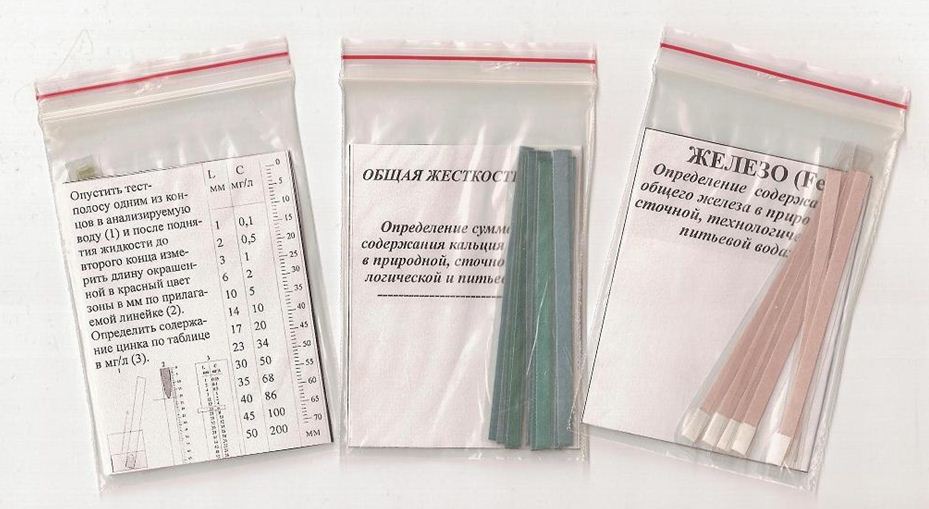
Test strips.
Important: some manufacturers of dishwashers, for example, brands Bosch, sell their household appliances complete with similar strips.
The principle of operation of all such test strips is identical: they are immersed in water for a minimum amount of time (from 1 second to 3 seconds) and after drying they acquire a certain color.
After this, the owners of the dishwashers can only compare the result with a special table to determine the degree of hardness of the water.
- TDS meter or salinometer
Such a salimeter uses electric current to operate. When immersed in water, the device begins to produce electrons and measure the amount of salts that interfere with the creation of an electric field. The received data is almost instantly displayed.
How to “fight” hard water
Unfortunately, without the use of special devices, a person alone can not affect stiffness, since such a parameter directly depends on the composition of the soil.
Important: the more calcareous rocks contained in the soil of a particular region, the more hard water gets into residential buildings.
Of course, no one forbids boiling water to soften it, but in the case of constant hardness, this method is ineffective.
For this reason, large manufacturers of dishwashers and washing machines have long been producing special tablets and powders to soften water. However, such means of adjusting the stiffness do not always guarantee a “soft” result.
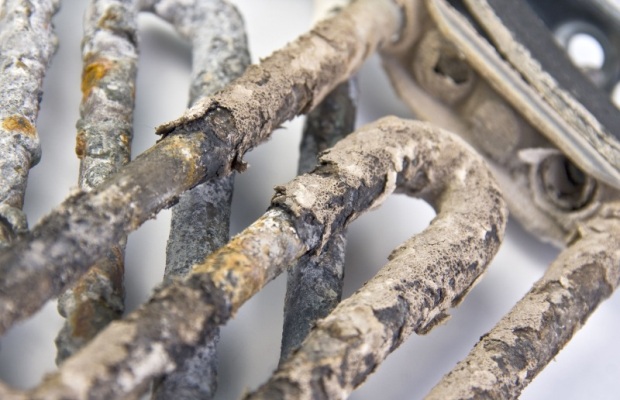
What's next
Imagine that the degree of water hardness is determined. What to do next? How to set the hardness of water in our dishwasher?
Of course, if the water is hard, it should be softened. You can do this as follows:
Use regenerating salt
Why do we need a special dishwasher salt? All dishwashers, without exception, are equipped with one important detail: the ion exchanger, which is responsible for softening the water.
In turn, the principle of operation of such a device is based on a resin containing sodium ions. These ions, coming into contact with hard water, attract calcium and magnesium ions, which makes H2O softer.
But since there are no “eternal” devices, the performance of the ion exchanger must be maintained with the help of a regenerating salt.
how set the dishwasher indicatorso that the appliance uses up the right amount of salt?
The answer to this question is in the instructions for use attached to each specific dishwasher, but for an example we will consider table 2.
| Water hardness value, °dH | mmol / l | Indicator value |
| 0-6 | 0-1,1 | H: 00 |
| 7-8 | 1,2-1,4 | H: 01 |
| 9-10 | 1,5-1,8 | H: 02 |
| 11-12 | 1,9-2,1 | H: 03 |
| 13-16 | 2,2-2,9 | H: 04 |
| 17-21 | 3,0-3,7 | H: 05 |
| 22-30 | 3,8-5,4 | H: 06 |
| 31-50 | 5,5-8,9 | H: 07 |
Table 2
Install a water filter so that the dishwasher will receive soft water.
However, even the best, widely publicized filters are not able to completely soften or purify water, and you should not forget about this.
And what will happen if you do not soften
Firstly, the dishwasher will quickly become unusable. As a result, additional financial investments will be required.
Secondly, the dishes washed by the appliance after drying will be “decorated” with white stains. Such a “gift” is especially noticeable on dark glass surfaces.
And thirdly, the whole point home installation dishwashers will be lost. After all, why spend money on a device that does not cope with functional tasks?

Setting the water hardness indicator in the dishwasher
So, there is a dishwasher, there is dirty dishes, there is special salt, powder and detergent. What to do next? How to set the desired indicator?
Important: By default, in most dishwashers, the water hardness value is set to 3rd position.
- Read the instructions carefully.
- Turn on the dishwasher (hold the corresponding button for 3 seconds).
- Press the “P” or “+” button.
It should be noted that the choice of water hardness level depends on the duration of pressing the button. That is, the more indicators that are on and light up, the higher this indicator is set.
If the device is equipped with a display, it is on it that the digital value of a similar characteristic is displayed, where 1 is soft water and 5 is hard.
- After selecting the stiffness, wait 10 seconds (this time the machine needs to go from automatic, factory settings to user, individual).
- After graduation dishwasher workscarefully study the result.
The absence of any marks on the dishes will indicate that the water hardness in the dishwasher is set correctly.


